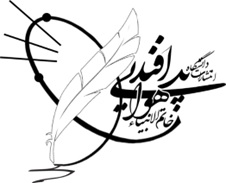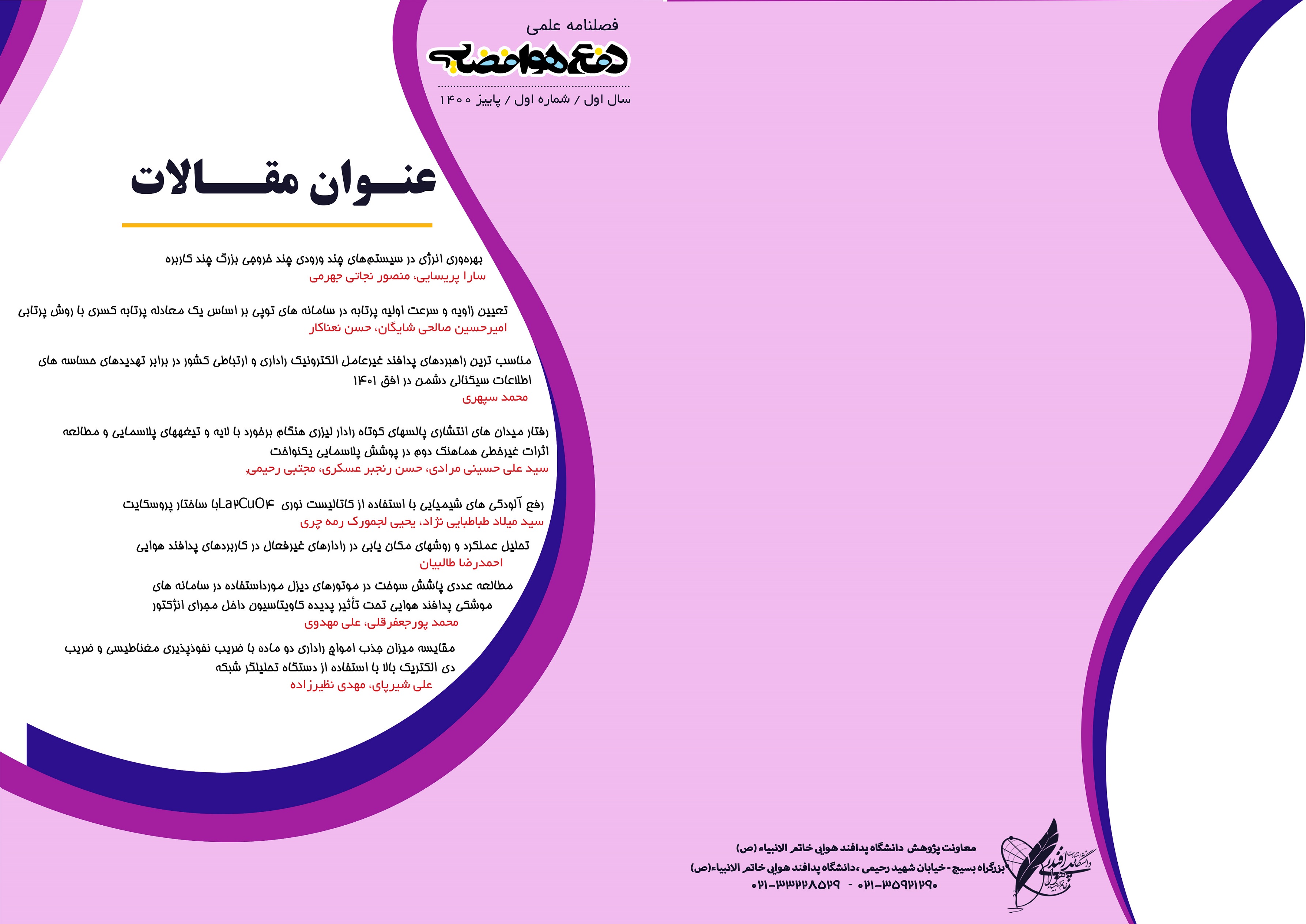نوع مقاله : مقاله پژوهشی
نویسندگان
1 کارشناسی ارشد مهندسی برق- مخابرات، دانشکده فنی و مهندسی، دانشگاه آزاد اسلامی، واحد تهران جنوب، تهران، ایران
2 استادیار گروه مخابرات دانشکده برق، دانشگاه علوم و فنون هوائی شهید ستاری، تهران، ایران
چکیده
استفاده از سیستمهای مخابراتی با بهرهوری انرژی و نرخ دادهی بالا همراه باکیفیت خدمات مطلوب، زیرساخت یک سامانهی فرماندهی و کنترل (C4I) است که در شرایط بحران باید با بهترین کیفیت مخابره، مورداستفاده قرار گیرد. بهکارگیری چنین ساختاری در سامانههای پدافندی نوین جایگاه ویژهای دارند. لذا، طراحی اینگونه سیستمها، به چالش اصلی و زمینهی تحقیقاتی بسیار مهم در زمینهی مخابرات تبدیلشده است. رشد روزافزون مخابرات بیسیم و سرعتبالای ترافیک دادهی چندرسانهای و حضور چند کاربر، با مصرف انرژی همراه است که بهرهوری انرژی و استفادهی بهینه از انرژی و توان را در مخابرات موردتوجه قرار داده است. بهگونهای که بهرهوری انرژی به دلیل مسائل زیستمحیطی و اقتصادی بهعنوان یکی از اهداف عمدهی طراحی سیستمهای مخابراتی بیسیم به شمار میرود. سیستمهای چند ورودی چند خروجی چندکاربره یکی از شیوههای نوین مخابرات بوده در این سیستمها استفاده از صدها آنتن در ایستگاه پایه باعث بهبود بهرهوری انرژی میشود. افزایش تعداد آنتنهای سیستم باعث افزایش نرخ تبادل اطلاعات، مصرف انرژی و سختافزار میگردد. ارائهی مدل انتخاب توان در سیستمهای چند ورودی چند خروجی بزرگ چندکاربره باعث بهرهوری انرژی میشود. از عوامل مهم تأثیرگذار بر بهرهوری انرژی، توان ارسال واقعی و توان مصرفی در مدارهای فرستنده و گیرنده، تعداد آنتنها، تعداد کاربران و همبستگی فضایی بین آنتنها است. در این مقاله الگوریتم انتخاب دورترین آنتن، پیشنهادشده است (عدم همبستگی آنتنها)، که منجر به بهبود بهرهوری انرژی به میزان قابل معناداری نسبت به حالت متداول میشود.
کلیدواژهها
- الگوریتم انتخاب دورترین آنتن
- بهرهوری انرژی
- سیستمهای چند ورودی چند خروجی بزرگ چندکاربره
- مدل انتخاب توان
موضوعات
عنوان مقاله [English]
Energy Efficiency in massive multi-user Multiple-Input Multiple-Output
چکیده [English]
The use of telecommunication systems with high energy efficiency and high data rates along with the desired quality of services is the infrastructure of a command and control system (C4I) that should be used with the best quality of communication in times of crisis. The use of such a structure has a special place in modern defense systems. Therefore, the design of such systems has become a major challenge and a very important research field in the field of telecommunications. The increasing growth of wireless telecommunications and the high speed of multimedia data traffic and the presence of multiple users are associated with energy consumption, which has focused on energy efficiency and the optimal use of energy and power in telecommunications. Energy efficiency is considered as one of the major goals of wireless telecommunication systems design due to environmental and economic issues. . Multi-user multi-input multi-output systems are one of the new methods of telecommunications. In these systems, the use of hundreds of antennas in the base station improves energy efficiency. Increasing the number of system antennas increases the rate of information exchange, energy consumption and hardware, the introduction of a power selection model in multi-input multi-output multi-user systems increases energy efficiency. Important factors affecting energy efficiency are actual transmission power and power consumption in transmitter and receiver circuits, number of antennas, number of users and spatial correlation between antennas. In this paper, the algorithm for selecting the farthest antenna is proposed (antenna correlation), which leads to a significant improvement in energy efficiency compared to the conventional state.
کلیدواژهها [English]
- Farthest antenna selection algorithm
- Energy efficiency
- Multi-input
- Multi-output
- Multi-user systems
- Power selection model

